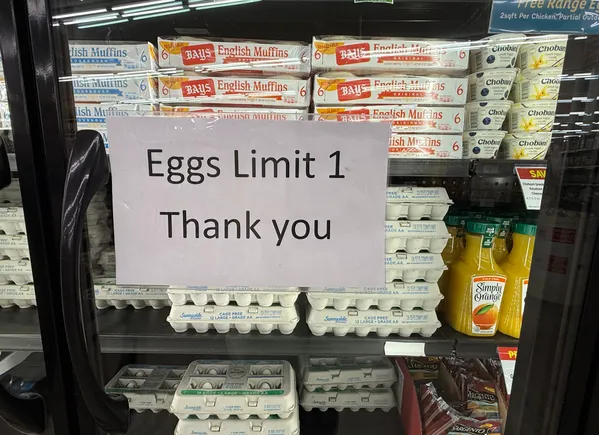Egg prices have been a hot topic in recent months, with fluctuations due to various factors such as bird flu outbreaks and consumer demand. The USDA recently reported that negotiated wholesale prices for graded loose eggs have been on a downward trajectory, thanks to the absence of significant bird flu outbreaks in March. This positive trend has been reflected in the egg supply chain, with grocers stocking up on shell eggs to meet demand.
Despite the increase in egg supply, grocer’s egg prices have yet to reflect these trends. Demand for shell eggs has dropped steeply, as grocers are not currently incentivizing egg purchases to avoid running low on stock. The USDA’s most recent weekly Egg Markets Overview report highlighted these developments, noting that demand is expected to remain dampened in the coming weeks.
On the bright side, the volume of eggs processed last week saw a significant increase of 6.5%, the highest level in three months. The overall shell egg inventory grew by just over 5%, with large class shell eggs seeing an 8.5% increase. This surge in egg production has helped alleviate some of the supply chain pressures, but it remains to be seen if pricing will improve before the anticipated increase in consumer demand for Easter.
Egg prices have seen significant fluctuations in recent months, with February prices almost 59% higher than the previous year. The U.S. Bureau of Labor Statistics reported a 12.5% increase in egg prices on a month-to-month basis, with an average price of $5.90 per dozen in February. To address the ongoing bird flu outbreak and lower egg prices, U.S. Secretary of Agriculture Brooke Rollins announced a $1 billion strategy that includes funding for biosecurity measures, financial relief for impacted farmers, and vaccine research.
However, the USDA’s efforts to combat the bird flu outbreak have faced challenges, as the agency struggles to rehire employees who were previously working on the issue but were laid off during the Trump administration. Politico reported that rehiring these experienced workers has been a hurdle in implementing the comprehensive strategy to protect the U.S. poultry industry and stabilize egg prices.
Overall, the egg market continues to be a dynamic and evolving landscape, with various factors influencing supply, demand, and pricing. As the industry navigates through these challenges, stakeholders will need to work together to ensure a stable and sustainable egg supply for consumers.


